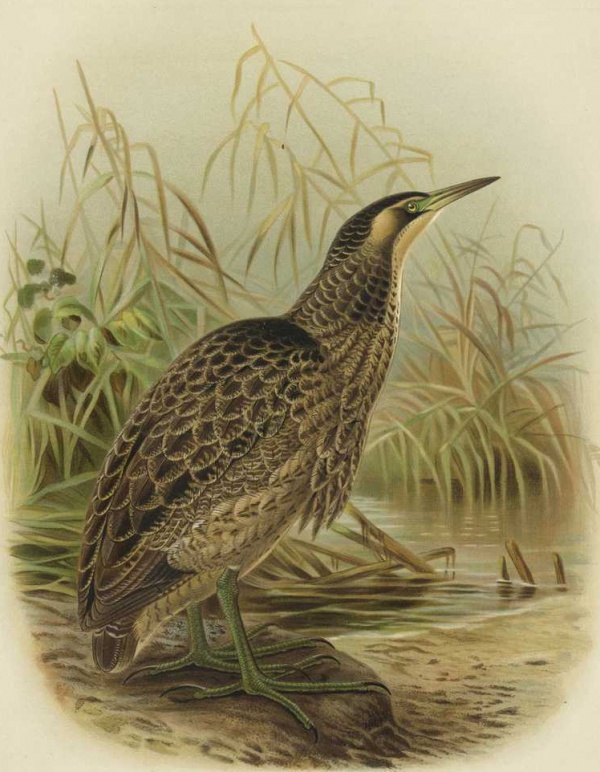Facts About Australasian bittern
The Australasian bittern, also known as the brown bittern or matuku hūrepo, is a large and elusive bird belonging to the heron family (Ardeidae). Renowned for its distinctive booming call, this bird is more often heard than seen. Unfortunately, it is endangered in both Australia and New Zealand.
First described by German zoologist Johann Georg Wagler in 1827, the Australasian bittern is one of four similarly-plumaged species within the genus Botaurus. These birds measure between 65 to 75 cm in length. While males and females look similar, males are generally larger. They display a deep brown upper surface with buff wing coverts, a buff face and eyebrow marked by dark brown stripes, and a buff underside with brown stripes. Their facial skin, legs, and feet are dull green, and they possess a dark brown bill with yellow eyes and a green-yellow base on the lower mandible.
The Australasian bittern primarily feeds on aquatic animals such as frogs, eels, and freshwater crustaceans. They nest solitarily on the ground within dense wetland vegetation. Researchers often monitor their population by counting males based on their loud breeding calls, which are best heard an hour before sunrise during September’s southern spring, on moonlit nights without clouds or rain.
These bitterns inhabit regions in southwestern and southeastern Australia, Tasmania, New Zealand, New Caledonia, and Ouvea. However, their numbers have significantly declined throughout the 20th century due to wetland drainage and degradation. The Australasian bittern is listed as endangered under Australia’s Environment Protection and Biodiversity Conservation Act 1999 and as threatened under Victoria's Flora and Fauna Guarantee Act of 1988.
The principal threat to the Australasian bittern is the destruction of its wetland habitat and drought refuges. Conservation efforts are crucial to preventing further decline. BirdLife International has identified several critical sites in Australia essential for the conservation of this unique bird.
